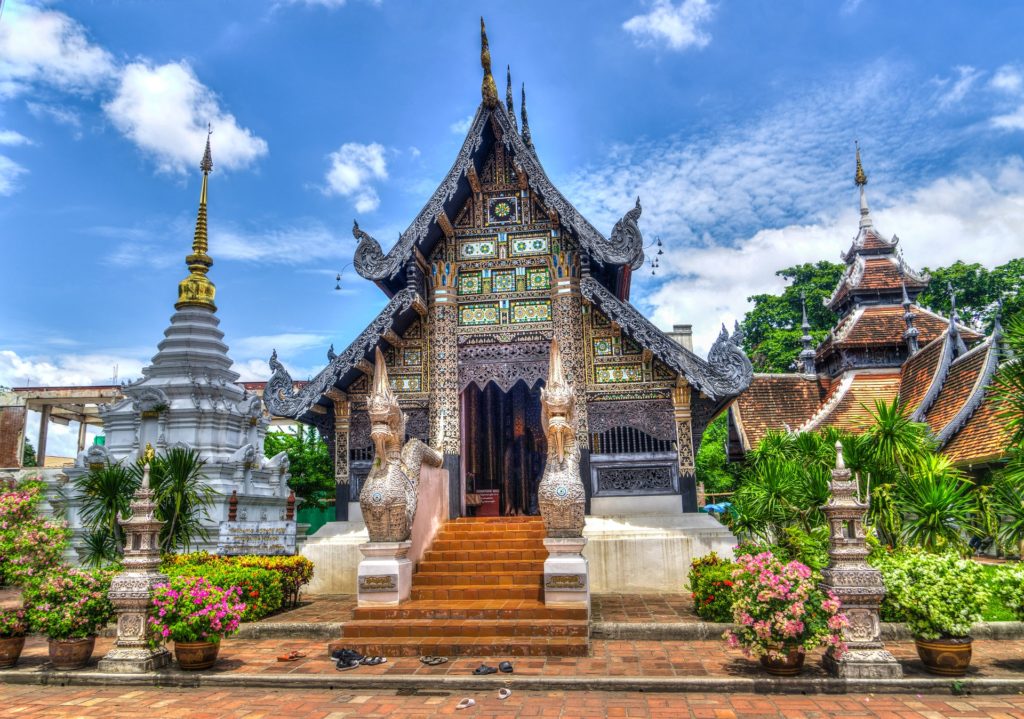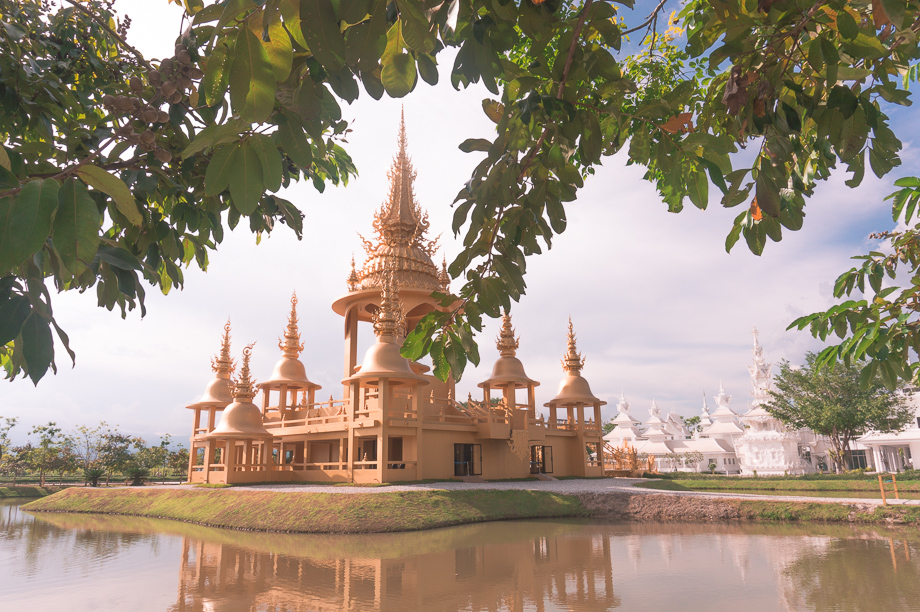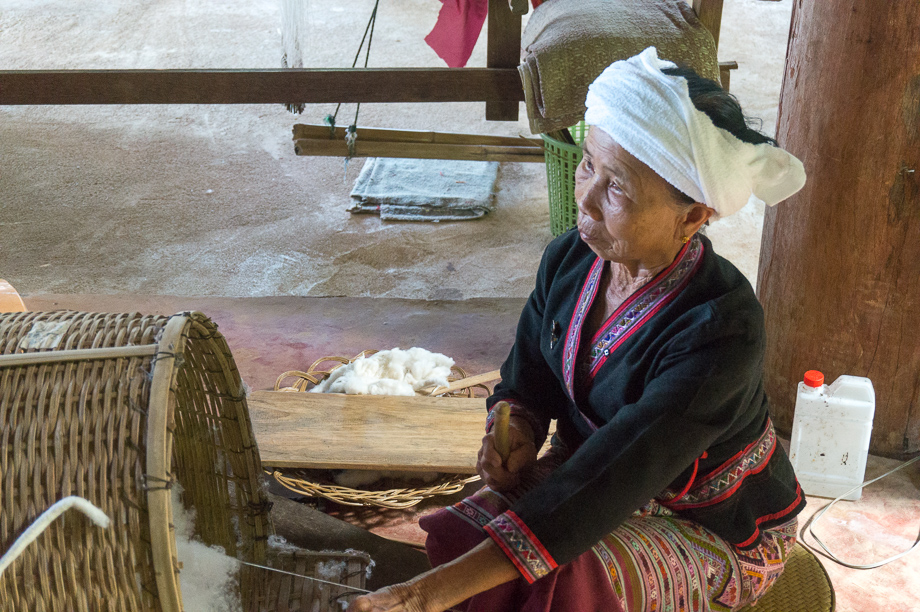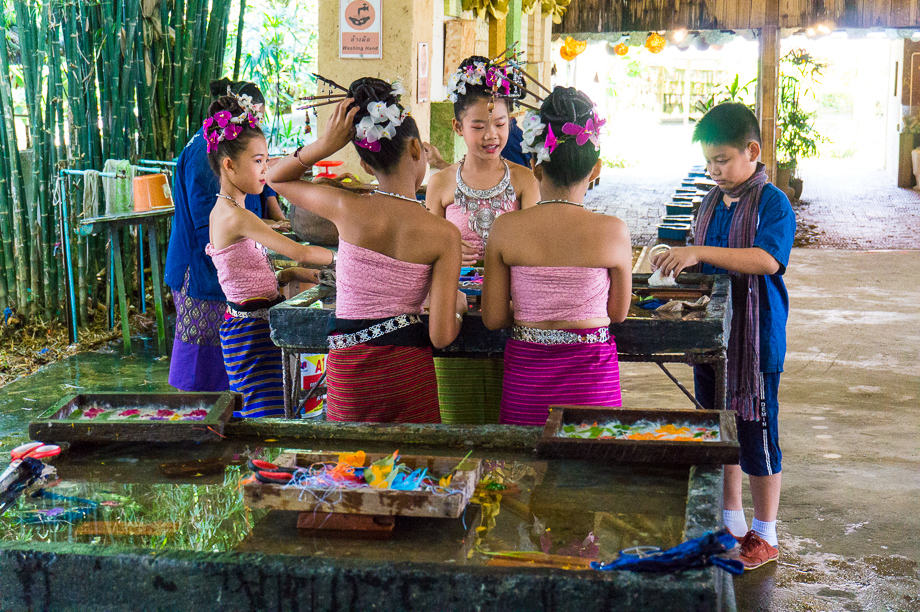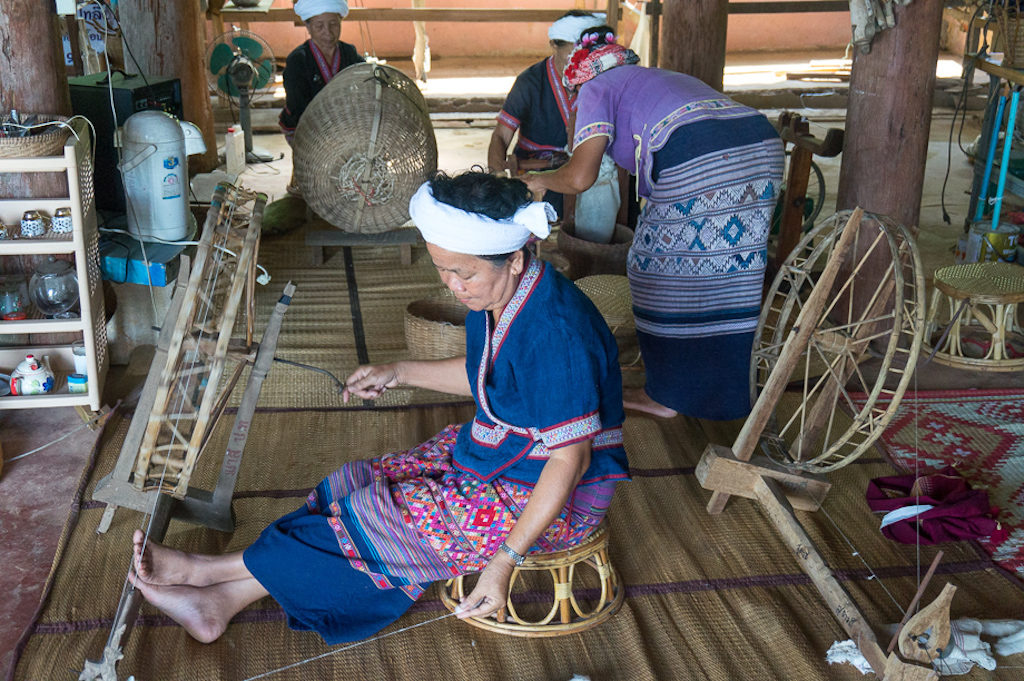Discovering Traditional Arts in Thailand’s Golden Triangle
The Golden Triangle region of Northern Thailand sits at the intersection of three Southeast Asian countries along the Mekong and Ruak Rivers: Thailand, Laos, and Myanmar. A visit to this area is an incredible way to learn about the culture, history, and traditional arts of the region, which have been created over centuries by talented artisans and craftsmen. Although tourists may flock to the beaches and party islands of Thailand’s south, the north of the country provides a deeply cultural experience; the rugged and lush mountains are home to many traditional villages.
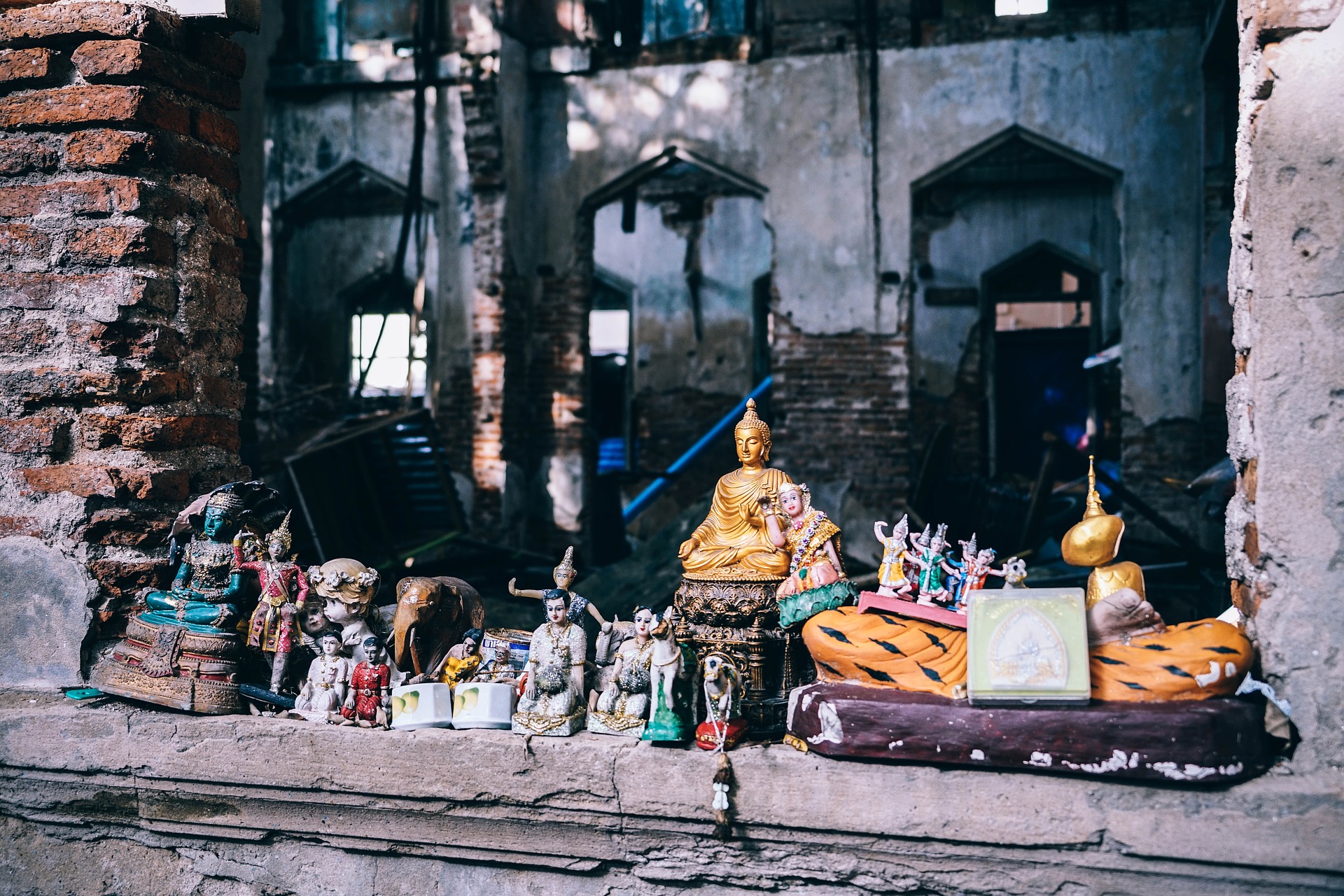
As a visitor to a new place, it is sometimes hard to know which cultural experiences are ethical, community-led, and authentic. This is especially true with wildlife experiences and when purchasing crafts or art. The government of Thailand has created an initiative to help visitors with those choices that also protects the traditional arts in Northern Thailand, and across the country. The stimulus program is called OTOP, short for One Tambon, One Product.
Government Support for Crafts
A tambon is a governmental district within Thailand, like a township. Each tambon is recognized through OTOP as the star producer of a particular product. Each participating tambon specializes in this product, allowing the uniqueness of each region to receive acclaim. OTOP provides support in marketing, development, and advertising for each product, and assists with international and domestic sales through its website, sales channels, and locally owned businesses. OTOP products vary but can include silks, woven goods, bamboo weaving, carved woodwork, linen, and pottery.
Thailand recognizes the importance of preserving arts and tradition, as well as the importance it plays in tourism. “Thai Traditional arts and crafts have been passed through generations within communities. The importance of this rich heritage is the wealth of ancient history, knowledge, and skills that are transmitted from our ancestors and passed on to our descendants,” said Suladda Sarutilavan, Thailand’s Director of Tourism Authority in Sydney.
“What we can do is to preserve our traditions by spreading out this treasure to people who would love to learn and experience local arts and crafts with real locals so that our traditions will still exist,” Sarutilavan added.
Choosing a Base to Explore Local Crafts
One of the best areas of Thailand to learn more about OTOP and the local crafts in Northern Thailand is in Chiang Rai a stunning, ancient city that provides the perfect jumping off point for exploring the culture and arts of the north.
Northern Thailand is home to the Lanna people, an ethnic group that can be traced back to the area since at least 1262. Many Lanna people still speak their traditional language, Kham Mueang, and they are known throughout Thailand for their strong cultural traditions, which continue today.
There are several locations in Chiang Rai where guests can experience traditional crafts and can play an active part in learning more and trying it out themselves.
Saa paper
Saa paper is made from the bark of the mulberry tree and is a traditional art of Northern Thailand. Saa paper is a handmade craft, which is both delicate and strong, and the paper is intricately decorated with local flowers, leaves, and colored paper. The paper is also functional, and is used for stationery, paper bags, or is often framed and displayed.
Jinnaluck Mulberry Saa Paper Community Enterprises (or simply Jinnaluck), located in the province of Chiang Rai, is a female-owned local business and the best place to learn about the art of Saa papermaking.
Guests learn from the owner about the importance of this traditional art and can make their own paper. Starting with the wet pulp, visitors can create their own paper by picking flowers from the on-site garden, which are used to decorate and design your paper. The wet paper then dries in the sun and is delivered to your accommodation a few days later, a personal souvenir to take home.
The experience of making Saa paper is a hands-on and fun way to learn about this craft and a way to work together with local people to create a beautiful product is a memorable and meaningful travel experience, unique to Chiang Rai.
Tai Lue weaving
One of the most visually stunning OTOP products is Tai Lue weaving. Tai Lue weaving is a traditional art, handed down from generation to generation. The weaving is all done by hand, from spinning the locally grown cotton into thread, which is then dyed vibrant colors and woven on a wooden loom to create clothing, bags and satchels, and cotton goods. The weaving creates intricate and beautiful designs, all with cultural significance and meaning.
A visit to the Ban Hat Bae Tai Lue Weaving Village, in the Chiang Rai town of Chiang Khong, is another way to try your hand at a local craft, and guests can participate in the weaving processes and learn from traditional artisans. While the craftsmen make the process look simple, it is incredibly complex and difficult, as you will quickly find out.
Weaving, Ceramics and Other Traditions
In addition to Tai Lue weaving and Saa paper, other local crafts of Northern Thailand include bamboo weaving, ceramics, jewelry, and traditional dance. A tour guide is the best way to experience these activities, as most of the craftsmen are not fluent in English, and a guide can act as an interpreter, explaining the meaning, history, and reasons behind each experience.
One of the best reasons to visit the Golden Triangle is to discover Thai arts and culture, and the OTOP program helps to ensure visitors have meaningful and real experiences and, of equal importance, local culture is preserved and protected for future generations.
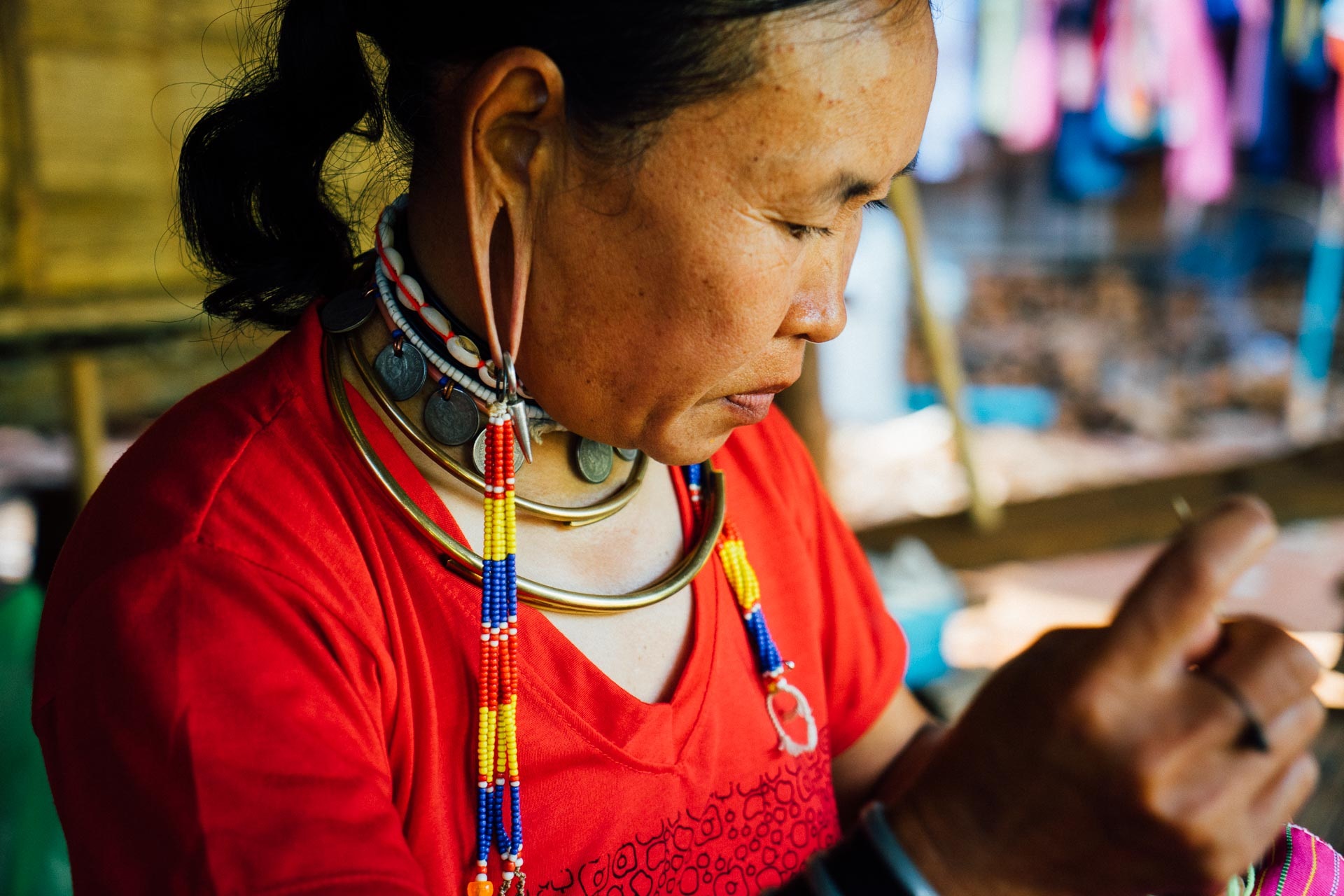
Book Your Stay in Northern Thailand
Search, compare and book hotels & rentals at the best prices that are sourced from a variety of platforms including Booking.com, Hotels.com, Expedia, Vrbo, and more. You can move the map to search for accommodations in other areas and also use the filter to find restaurants, purchase tickets for tours and attractions, and locate interesting points of interest!


